






















































Folks taking dietary supplements in tended to help their heart health are just wasting their money, a new clinical trial suggests.
Six supplements widely pro moted as heart-healthy — fish oil, cinnamon, garlic, turmeric, plant sterols and red yeast rice — didn’t do a thing to lower “bad” low-den sity lipoprotein (LDL) cholesterol or improve heart health, researchers found.

“Compared to placebo, none of the supplements had a significant de crease in LDL cholesterol,” said lead researcher, physician Luke Laffin, co-director of the Cleveland Clinic’s Center for Blood Pressure Disorders.
In fact, two of the supple ments made matters worse, Laffin said during a presentation on the findings in November at the Ameri can Heart Association’s annual meet ing, in Chicago. The study findings were published Nov. 6 in the Journal of the American College of Cardiol ogy.
The garlic supplement actually increased LDL cholesterol by nearly 8%, while plant sterols decreased “good” high-density lipoprotein (HDL) cholesterol levels by more than 7%, the results showed.
The clinical trial also demonstrat ed that statins are incredibly effective in lowering cholesterol.

A low dose of cholesterol-lower ing rosuvastatin (Crestor) prompted,
on average, a nearly 38% decrease in bad LDL cholesterol, Laffin said.
“Every participant random ized to rosuvastatin had at least an 18.2% reduction in LDL cholesterol, with half receiving over 40% re duction in LDL cholesterol,” Laffin said. “Whereas with all the sup plements and placebo, you might as well flip a coin in terms of is your LDL cholesterol going to go down or is it going to go up.”
The statin also caused none of the side effects usually cited by peo ple reluctant to take the meds.

“There were no musculoskeletal complaints, no neurological com plaints, no significant elevation in liv er function tests and no meaningful change in glucose as well,“ Laffin added. “So very, very safe.”
Laffin said he used the findings just last week in a conversation with a man who was taking three or four of these supplements as well as a statin.
“I said, why are you taking this? Why are you taking that? And he said, ‘well, you know, one of my buddies in the locker room told me about it,’” Laffin said. “I said, well, you don’t have to. It’s not doing anything. And he turned to his wife and said, ‘OK, I guess you were right, honey.’”
Supplements are a nearly $50 billion industry in the United States, and about one in every five people
using supplements take them to promote heart health or lower their cholesterol, Laffin said.
To see whether these supple ments make any difference, Laffin and his colleagues randomly as signed about 200 people aged 40 to 75 to take either a low-dose statin, a placebo or one of the six supplements for a month.
On top of the drop in LDL cho lesterol, the statin wound up caus ing an average 24% decrease in total cholesterol and a 19% decrease in tri glycerides as well. None of the dietary supplements had any effect on these cholesterol measures.
Dietary supplements are poorly regulated in the United States, and people taking them run the risk of having a dangerous interaction with one of their prescribed medications, Laffin added.
“Cardiologists, primary care phy sicians and others really need to use
these results to have evidence-based discussions with patients. This is a $50 billion a year industry where our patients aren’t getting benefit,” Laffin noted.
But the Council for Respon sible Nutrition, which represents supplement makers, took issue with the findings.
The study “completely misses the point of supplementation by comparing the effects of a prescrip tion drug to dietary supplements in a short-term study. Dietary supple ments are not intended to be quick fixes and their effects may not be revealed during the course of a study that only spans four weeks, partic ularly on a multifactorial condition like high cholesterol. This is a major — and author-acknowledged — lim itation of the study,” Andrea Wong, senior vice president of Scientific and Regulatory Affairs at the council, said in a statement.
“Patients want to make sure that they are getting the best treatment that they can get anywhere. At Roswell Park, we are at the forefront of new cancer therapies. They know, with full confidence, they are getting the best cancer care available.”
 – Renier Brentjens, MD, PhD Deputy Director
– Renier Brentjens, MD, PhD Deputy Director
Please visit JustOneDayWithUs.org or call 1-800-ROSWELL (767-9355) Kim Sweeney and her team are here to assist.
Much like intense exercise, vigorous sex can trigger an asth ma attack in folks with the chronic lung disease, according to new research.
“There is a lack of cur rent literature available on the prevalence of sexual intercourse presenting as exercise-induced asthma,” said study author, physician Ariel Leung, chief in ternal medicine resident at Saint Agnes Medical Center in Fresno, California.
This could be because sex isn’t always the easiest topic to broach with your doctor.
“When sexual intercourse-in duced asthma is properly identified and treated, allergists are placed in a position where they can improve their patients’ quality of life and even their marriages,” Leung said.
When it comes to the risk of having an asthma attack, vig orous sex is akin to walking up two flights of stairs, she noted.
The same measures that keep asthma at bay during ex ercise can also help stave off a sex-induced asthma attack.
“We recommend that pa tients take their short-acting beta agonist inhaler 30 minutes prior to sexual intercourse to prevent an asthma attack,” Leung said. “Some patients might think it takes away from the romance, but nothing is more romantic than taking care of yourself and not having your partner observe an asthma attack.”
The wheezing, cough ing, shortness of breath and chest tightness that are hallmarks of an asthma attack are caused by inflammation that narrows air ways. It can’t be cured but it can be managed.

Along with taking med ication as directed, a healthy lifestyle that includes regular ex ercise and eating well can also help keep asthma symptoms at bay, Leung said.
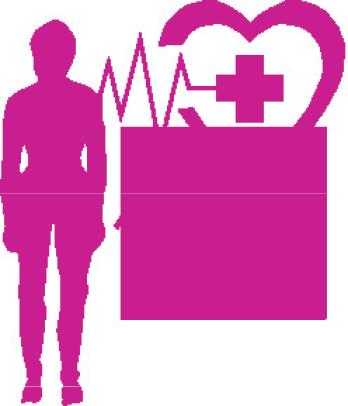
For the new study, the researchers searched medical literature for articles on sex as a trigger for asthma attacks using keywords such as “sexual inter course,” “honeymoon asthma,” “sexual behavior and allergy,” and “allergic reaction.”
Other than a few case stud ies, they didn’t find much. They did, however, find more research on the risk of allergic reactions and asthma flares from semen or latex condoms.
The research was present ed recently at a meeting of the American College of Allergy, Asthma, and Immunology (ACAAI), in Louisville. Findings presented at medical meetings should be considered prelimi nary until published in a peer-re viewed journal.
 Richard Castaldo, MD
Richard Castaldo, MD
Q: You are the medical director at Niagara Hospice?
A: Yes, of Niagara Hospice, Pal liative Care and Kalos Health, which is an insurance company. It’s an umbrella of four companies. We also have Liberty, which is a transporta tion company, but I’m the medical director of the first three I mentioned.
Q: How do you coordinate across those groups?
A: A lot of meetings. With boots on the ground for the nurses, I take all of the home care calls and all the admission calls. I’m the gatekeeper. We have seven providers that work in the acute units on the residential sides. One of the nurse practitioners goes to the homes to do what we call “face-to-face” for recertifications every 60 days. But I coordinate all the doctor activity and home care calls. If they choose us as their primary or they can’t get a primary, it goes through myself. And I handle all the admissions.
thing respiratory that might require isolation.
Q: What’s RSV?
A: It’s the syncytial virus that out there now infecting kids. We actually had an adult who had it. So we have the isolation rooms, the acute beds we had already and we’re adding six more residential. But we didn’t change our processes much beyond that. We try to be very liberal when it comes to visitations, especially for patients who are end-stage or dying. Maybe the biggest thing was we used to have family gatherings at the hospice where we would feed them and let them sleep over; that’s more restricted than it was. We have two family rooms. We’ve tried basically to keep things normal. We want you to be comfortable and live better while you still have time on the planet. We don’t want to be the grim reaper. We want you to come in, be comfortable and have the remain ing time you have be as normal and comfortable as possible. We even try to make our rooms look less like
A: Yes. Either you’ve done some reading or you know your stuff. National average is 6.6% to be exact. We know all our numbers because we have students coming through here from UB Med. Our number is 2.6%, so occasionally someone might have second thoughts about or, even rarer, they’re not declining anymore. We can’t keep them past six months. There’s is a six-month window for Medicare and 12 months for Med icaid. If you’re over that time and you’re not declining, we’ll ask them to opt out of hospice. Hospice is a carved-out benefit in Medicare, so it’s already paid for. You elect to have hospice services.
Q: If you did come off hospice after having used most of your months, would you eventually become eligible again?
A: Yes, if you were deteriorating two months down the road again, we wouldn’t say no. We always tell them if something changes to get back in contact with us. And this can be due to other issues like changing zip code. Each county is only allowed one hospice. Now there are other services that offer end-of-life services that call themselves things like “com fort care,” but they aren’t hospice. We’re the specialists.
Q: Is the county limitation on hos pice a state or federal thing?
A: State. At the federal level it’s a free-for-all. In Florida and Texas you can have multiple in the same city; they’re advertising and competing. Here it goes by county. The rule of thumb is about 10% saturation in terms of beds. We’re close to that at around 200 patients. Erie County is about 2,000, but they have a very good palliative care program.
Q: How big is your palliative care program?
We have our own is pretty much as
A: We have a whole palliative care program. We have a nurse, a social worker and nurse practitioner dedicated to it. It’s a small program. We don’t really advertise it. About 100 patients. We have a very high conversion rate of palliative care into hospice, which is good because it makes for an easy transition if you become eligible for hospice care. So the trajectory of care allows us to serve patients with chronic illness all the way through.
Q: What are the key differences be tween palliative and hospice care?
A: The main difference is that palliative care allows treatment. You can seek whatever treatment for whatever chronic disease you have. If you get to the hospital, we’ll check in with them. We have remote moni toring equipment we can give them. We can help them navigate treatment somewhat. We don’t do that, per se, for hospice patients.
Name: Richard Castaldo, MD
Position: Medical Director of Niagara Hospice
Hometown: Bronx Education: University at Buffalo Medical School
Affiliations: Niagara Falls Memorial Hospital Organizations: Niagara County Medical Society
Family: Wife; five children
Hobbies: Race horses
Erie and Niagara rank among the least healthy in New York state, according to a recent report
By Deborah Jeanne SergeantOf New York’s 62 counties, the County Health Rankings & Roadmaps 2022 (www. countyhealthrankings.org) funded by the Robert Wood Johnson Foun dation, ranked Erie County as No. 46 in health outcomes. Niagara ranked 53rd.
The rankings were affected by health behaviors (tobacco use, diet, exercise, alcohol and drug use, and sexual activity), clinical care (access and quality), and social economic factors (educa tion, employment, income, family and social support and community safety), and physical environment (air and water quality, housing and transit).
So, what could help Western New York rank better?
Brian DeLuca, physical therapist and director of physical therapy and impact sports performance at UBMD Orthopaedics & Sports Medicine, said that education on health starts in schools. “Parents also need to be accountable to set that benchmark. In Colorado, people look at ‘How much activity can I get in?’ Buffalo has little focus on activity.”
DeLuca would like to see more people become involved in group activities, which can increase moti vation.
Andrea Langston, certified dieti tian nutritionist and owner of Thrive Nutrition & Wellness, LLC at Bialek Chiropractic in Amherst, wants to see more focus on nutritional health, including among doctors.
“Doctors are trained in pharma ceuticals and that’s important, but there’s not much training in nutrition — not at all,” Langston said. “There’s a disconnect because the medical sys tem is divided among the specialties. It’s the whole body. It’s all connected. Looking at the body in pieces can cause you to miss things.”
She would like to see more community members learn about nutrients and the gut microbiome, which comprises 80% of the im mune system. Langston believes that cooking lessons, nutrition classes and other food-oriented programming in the community would help.
She also thinks that raised aware
ness of low-cost and free resources would improve health.
“People are so used to gyms you pay for,” she said. “The younger gen eration might not think to use a free community fitness center at a school. A lot of resources in community that used to be staples, like free meals at senior centers, people have moved away from them.”
The area’s numerous free access parks, hiking trails, community fitness centers and pools and other resources provide many opportuni ties for fitness. However, residents need to realize that physical activity is important to health, gain access to resources and learn how to use them.
“Access is one thing import
ant to eating better,” said Mary Jo Parker, registered dietitian in private practice in Williamsville. “They talk about ‘food deserts.’ We need healthy things available. If there were more local farm to table, that might help people.”
She would like to see more wide spread use of cold storage for things like root crops and apples to encour age greater availability of fresh fruits and vegetables through the winter. She wants more education available to the public about topics such as consuming more produce, how to find affordable healthful foods and how to eat healthfully.
“People don’t know how to read labels and see the serving sizes,”
Parker said. “Nutrition education is important. The way to get the message through is making it more fun and accessible. Public service announcements for COVID-19 have been widespread, but not things like the way to be healthier is to exercise and eat healthier. People might need more concrete tips. A lot of people don’t think about ingredient substi tutions.”
Kelly Wofford, office of health equity director at Erie County Department of Health, said that her office is working to help the public access health information easier, including a newsletter about health resources.
“Throughout the county, there are many assets,” Wofford said. “There are assets within communi ties within Erie.”
In addition to the newsletter, she encourages residents to ask friends and neighbors about re sources such as where to exercise or where to find a food pantry.
Wofford hopes her office can pro vide a connection between those in need and resources.
Beyond awareness, she wants to promote creative thinking about access.
“There are beautiful parks and trails, but do people have access to them?” she said. “Do people working several jobs to pay their rent have time to use these trails? It’s more than having nice things but having access to them. And it’s also about having the time and resources to be able to take advantage of those things a lot of those falls under social determinants of health and health inequities.”
For many people in poor health, lack of information represents a huge factor. Wofford recalled that while she was canvassing a community for a health survey, she met a person whose family members had all lost toes to diabetes early in life and felt pleased to be the first person who hadn’t.
“You’re a reflection of your environment,” Wofford said. “People don’t even know what health is.”

In addition, many of the resourc es available do not meet the health needs of the county. For example, many food pantries lack fresh foods and rely upon shelf-stable staples.
“There are a lot of well-meaning access points and services, but they don’t meet the true needs of the indi vidual,” Wofford said.
She hopes that additional guidance from the county can help organizations improve the resources they offer.
Millions of people take daily med ication to lower their cholesterol lev els and prevent heart attacks, but there hasn’t been a drug that targets a dangerous type of cho lesterol in the blood known as lipoprotein(a), or Lp(a).
That’s why a new study of an investigational drug called olpa
siran, which blocks the production of apolipoprotein(a) — a key component of Lp(a) — is generating a lot of excite ment in scientific circles.
“Unlike other types of cholesterol, there is, unfortunately, no approved treatment that is currently available to lower Lp(a),” explained study author Dr. Michelle O’Donoghue, a cardiovas cular medicine specialist at Brigham and Women’s Hospital in Boston.
Olpasiran binds to the body’s own








mRNA, to prevent it from making apo lipoprotein(a).







The study looked at different doses of the new drug in about 230 people with high levels of Lp(a). Folks who received the highest doses of olpasiran in the study reduced their Lp(a) con centration by more than 95% compared with placebo. The drug is given via injection every 12 weeks.


The Federal Trade Commission (FTC) recently opposed the Certificate of Public Advan tage (COPA) proposed by Syracuse hospitals Upstate Medical University and Crouse Health. The COPA would allow the two hospitals to merge and shield them from federal anti-trust laws. The FTC argued the proposed merger would reduce competition, raise prices, lower quality and de press wages.
The FTC said their research bears this out. I’m sure there is plenty of re search that shows without merging, several financially strapped hospitals would have closed altogether. For rural and even suburban commu nities, a closure results in NO care, NO wages, NO emergency room and longer drives for care.
Ironically, rather than saving a distressed hospital via merger, an aggressive, predatory hospital could just let it fail, resulting in less compe tition. Upstate and Crouse are liter ally across the street from each other, so no outlying community would suffer if Crouse closed.
However, the overall Central New York community needs the beds. Upstate is chock full. So why would the FTC oppose the COPA/ merger?
If Crouse were to close, Upstate would most likely purchase the assets and hire back the staff. The quality of care would at least be maintained, if not improved. There is still local competition with Trinity Health, which is part of a 95-hospital conglomerate. The FTC fears prices will rise. Wrong. Medicare and Med

A Harris poll of 5,000 adults found 94% of those who used virtual
icaid set what they pay prospectively. There is no negotiating. There are enough commercial insurers in town to keep the newly merged entity from flexing their market share. Rais ing “prices” has virtually no impact on hospital revenue when 90% of their revenues are controlled.
In the end, Upstate and Crouse will merge.
To put this potential merger into perspective, Louisiana-based LCMC is planning to purchase three Tu lane University hospitals (currently owned by HCA Healthcare). The local nurse unions are opposing the mega merger which would reduce competition to two huge systems.



When it comes to “competition,” the FTC might want to focus LESS on hospitals merging just to survive and MORE on the lack of choice in most markets when it comes to commer cial insurance options. 80% of all U.S. markets range from NO competition to LOW competition among commer cial carriers. Just five carriers control more than 70% of the commercial insurance market, which includes employer, individual and Advan tage plans. They are: United Health, which controls 28% of the market with $5.3 billion profit in third quar ter 2022; Humana, 19%; Aetna/CVS Health, 11% with revenues of $238.6 billion third quarter; Kaiser Perma nente, 7%; and Anthem/Elevance, 6%. And when insurers dominate a market, they can unilaterally raise prices for their commercial products. (In New York, insurer commercial premium increases are reviewed and approved by the NYSDOH.)
primary care (telehealth) were satis fied with their experience and 79% felt they had a greater role in manag ing their health. The poll found that
about half of the respondents weren’t sure what the term “virtual primary care” meant, indicating providers and insurers need to do a better job of communicating the service. How ever, other surveys have revealed telehealth usage declined from 78% in 2021 to 45% in 2022 among respon dents. This had more to do with per sonal preference than dissatisfaction. Younger adults were more likely to seek care from non-traditional pro viders, like retail clinics, showing less loyalty to specific providers. Younger adults, feeling more impacted by the pandemic, were more likely to seek virtual mental health services.
This time of the year, seniors are bombarded with cold calls, texts, emails and mailers from agents and brokers hawking their Advantage plan. And all of us are subject to the ubiquitous TV ads. (Thankfully, open enrollment ends in December.) Ten states have reported to CMS a surge in consumer complaints about ag gressive, misleading, confusing and even fraudulent marketing. Seniors have been duped into changing plans after being told their provider may no longer participate in their cur rent plan or they will be eligible for an increase in their Social Security check. Some marketing materials are made to look like official government documents. Consequentially, a Senate committee is considering stricter marketing rules including prior ap proval of all TV ads, (can they do that for political ads, please?), banning cold calls and holding insurance companies liable for the actions of their brokers and agents. Half of all Medicare members belong to an Advantage plan.
Over the past 20 years, industry stakeholders increased their lobbying expenses 70% from $358 million in 2000 to $714 million in 2020. In 2020
the breakdown among the four major stakeholders was drug manufactur ers $308m, providers $287m, insur ance/payers $81m and other firms (consulting, policy) $35m. As usual, drug manufactures lead the pack. They have the largest profits and have most to lose. The last thing they want is to be subjected to congres sional price controls like physicians and hospitals. Providers are lobbying to virtually stay afloat. Hundreds of hospitals have closed in the past 20 years and most surviving hospitals are operating in the red or with razor thin operating margins. Physicians are facing a 4.4% CUT in their Medi care payments next year.



As of this writing, Congress is controlled by the Democrats. Odds were Republicans would take the House election day. Assuming they did, what would change in healthcare? Experts see four areas of concern. First, they expect an oversight committee to scrutinize the implementation of the Inflation Reduction Act which finally gives Medicare the right to negotiate drug prices with manufacturers. Second, Congress could limit the expansion of Medicaid and related premium subsidies under the Affordable Care Act. Third, Congress could discontin ue telehealth flexibility for Medicare recipients. Fourth, and most contro versial, disrupting women’s repro ductive healthcare.
W.
a healthcare busi ness consultant who works exclusively with physicians, hos pitals and healthcare organizations. He op erates GW Chapman Consulting based in Syracuse. Email him at gwc@gwchapman consulting.com.


More and more nervous pa tients are showing up stoned for dental appointments, often forcing dentists to postpone treatment until the patient sobers up, new survey data shows.
As more states are legaliz ing marijuana, more than half of dentists (52%) report seeing patients high on weed or other drugs, a new survey from the American Dental Association (ADA) found.
“In my practice, I’m seeing more patients who are openly dis closing marijuana use,” said ADA spokeswoman Tricia Quartey, a dentist.
Many use marijuana to relax before an appointment, but being high can limit the care dentists can give and result in procedures being postponed, Quartey added.
“When somebody is under the influence, oftentimes we need to give more anesthesia or we may have difficulty with anesthesia,” Quartey said. “If you can’t get somebody fully numb, it’s not exactly creating the same experience and lessening the anxiety. You have to stop a visit
and send somebody home.”
The survey found 56% of dentists did just that, stating that they limit treatment while patients are high.
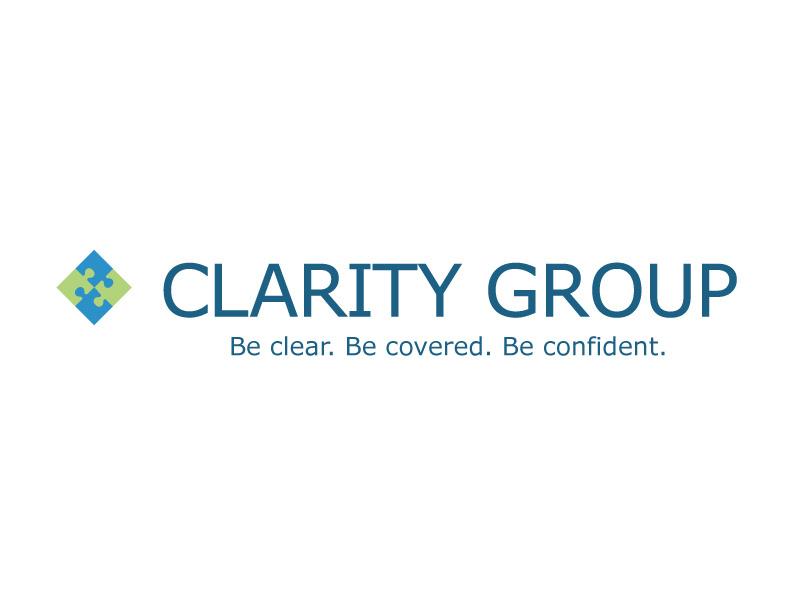
The data were gleaned from two online surveys, which included over 550 dentists across the United States and just over 1,000 patients. Among patients, the second survey found that 39% said they used marijuana. In addition, 25% of patients said they vaped, and of those respondents, 51% vaped marijuana.
Quartey said dentists should ask their patients if they use marijuana, and patients should discuss their marijuana use with their dentist. The ADA survey found that 67% of pa tients are comfortable talking to their dentist about marijuana.
“The advice to patients is to not use marijuana prior to an appoint ment,” Quartey said. “You think it’s going to reduce anxiety and it’s not. But if you do, inform your dentist so they can be fully aware of what is going on at the appointment. You should also be aware that the dentist oftentimes cancels the appointment.”
A monthly newspaper published by Local News, Inc. Distribution: 25,500 copies throughout more than 1,500 high-traffic locations.
In Good Health is published 12 times a year by Local News, Inc. © 2022 by Local News, Inc. All rights reserved. P.O. Box 550, Amherst, NY 14226
Phone: 716-332-0640 • Fax: 716-332-0779 • Email: editor@bfohealth.com
Editor & Publisher: Wagner Dotto
•
No material may be reproduced in whole or in part from this publication without the express written permission of the publisher. The information in this publication is intended to complement—not to take the place of—the recommendations of your health provider. Consult your physician before making major changes in your lifestyle or health care regimen.
Riders from across Upstate New York will reunite for the 2023 American Diabetes Associa tion (ADA) Tour de Cure next June. The ADA has announced that two full-scale, in-person events are sched uled, based on enthusiasm from current and projected participants.
The ADA 2023 Tour de Cure: Fin ger Lakes Region will take place on Saturday, June 10, at Xerox Campus in Webster, designed for riders from the Rochester, Buffalo and Syracuse areas.
This marks the second consecu tive in-person ride for this area of the state, following virtual gatherings in 2020 and 2021 due to the Covid-19 pandemic.
“We’re looking forward to building on current momentum for the 2023 Tours in the Finger Lakes and Capital Regions, building back to become two of the most successful events in the nation once again,” said Jeff Collins, executive director, ADA Upstate New York. “We’re confident that together we’ll reach this year’s ambitious goals for participation and fundraising, with special thanks to CVS Health and West Herr for their ongoing support.”
To help ADA bring these events back, CVS Health is the signature sponsor for both events, and West
Herr is a signature sponsor for the Finger Lakes region.
“Many of the of 2,700 West Herr team members who call Rochester, Buffalo and Syracuse home have family members or friends who are personally impacted by diabetes,” said Ben Macdonald, general man ager of signature sponsor West Herr Chrysler Dodge Jeep Ram Fiat of Rochester and executive committee member. “Partnering with the ADA and sponsoring the Tour de Cure is a great outlet for us to make a positive impact in the local community and support our team members as we look to prevent and cure diabetes and improve the lives of ALL people affected by diabetes.”
Founded in Buffalo in 1991, Tour de Cure brings together thousands of riders in cities across America to raise funds to support diabetes research, provide education, and advocate for the people living with diabetes and their families.

To register in the Finger Lakes region, go to diabetes.org/flxregion, and to sign up in the Capital Region, visit diabetes.org/capitalregion. For more information, please contact Jeff Collins at 1-800-676-4065 ext. 3479 or jcollins@diabetes.org.
Call Sally Stier
Locations in Depew, Amherst, Blasdell and Batavia.
1-800-medicare for information on all your options.
Now’s the time to review your Medicare Choices!
This column is for all of you who have friends or family members who live alone.

In December, most folks look forward to joyous holiday time filled with family gatherings, laughter, hugs and gift giving.
But not everyone is filled with jubilant anticipation. Those on their own, who may be missing loved ones, often experience feelings of loneliness and anxiety. The holiday blues emerge, which can dampen their holiday spirits.
What can you do to add a little “merry” to the holidays for those who live alone? You can give the gift of time together — probably the most welcome and cherished gift of all.
Below, I’ve compiled a list of gift ideas for you, beginning with gift suggestions that foster togetherness. These suggestions and those that follow are all designed to put a smile on the face of someone who lives alone.
• A “Be my guest!” gift certificate and tickets to a movie, concert, or theater production. Insist on doing the driving.
• A bottle of Champagne and invitation to join you (and perhaps
a few friends) for a New Year’s Eve get-together. This can be a challenging night for those who are newly divorced or widowed.
Years ago, after my divorce, I popped the cork with my sister and her husband. I was deeply grateful for their invitation to spend the evening together. It got my New Year off to a great start!
• Gift of Time coupons for time together doing things you think your friend or family member would enjoy. Here are a few ideas:
– Baking cookies together
– Go bowling – Lunch and shoe shopping – A sporting event or fishing adventure
– An afternoon of antiquing – A walk, hike, or bike ride
– Hands-on help with organizing a closet
– A visit to a local botanical garden
– Drinks at a nearby “watering hole” with permission to complain for hours. Ha!
My sister gave me that final coupon last Christmas. It was one of my favorites.
These gifts of time together are precious. Be creative. Keep it personal. And know that the gift of your company will be deeply appreciated and remembered long
after the holidays are behind us.
PAMPERING
• A subscription to online lessons, classes, workshops, and tutorials. Do you have a single friend who aspires to play the piano? Check out online music lessons. A divorced sister who eats supper directly from the take-out container? Consider a cooking class. Or a widowed mother interested in life-long learning? A continuing education course might delight her. There are so many possibilities!
• An opportunity to be “treated like royalty.” How many of your friends who live alone indulge themselves in luxury services? My guess is not many, if they’re like me. But that’s what makes this the perfect gift!
Why not surprise her with a spa certificate for a massage, facial, manicure, or pedicure? Or make his day with a certificate for a gentleman’s facial or deep tissue or sports massage?
• For women who live alone – fresh flowers delivered. Do you know a single woman who lives by herself? When’s the last time she got flowers? It’s probably been years . . . don’t I know it.
Consider sending a bouquet of roses or tulips red for love, yellow for friendship, pink for appreciation, and white for sympathy.
• And speaking of deliveries, check out Gift-of-the-Month clubs. Coming home alone at any time of year can feel a little empty, but it can really feel lonely during the winter months. Discovering a package on the doorstep can change everything.
Go online and check out gourmet gifts and food clubs. You won’t believe the variety of delicious items that can be delivered on a monthly basis: chocolates, hot sauce, cheese, tea, cigars, wine, beer, pastas, olive oil, cookies, popcorn, pancakes, or entire meals. I love this idea so much
I might treat myself.
• An AAA membership. I don’t leave home without it. A flat tire, an empty tank, a lost key I’ve been there. AAA has saved the day!
• Handy tools and supplies for emergencies or life’s unexpected moments. Consider a compact “nobattery” wind-up flashlight-radio with a hand crank. Or a Johnson & Johnson All-Purpose First Aid Kit.
• How about a Swiss Army knife, complete with a screwdriver, scissors, toothpick, and tweezers? It even comes with a nail file and corkscrew.
• A front-entrance motion sensor light that will illuminate your front porch after the sun goes down. This energy-saving device will light the way for visitors (or a new suitor?) and may also scare off intruders and critters. Those who live alone will appreciate the peace of mind.
• A gift certificate for car washes. While not necessarily a “safety gift,” I always feel better when my car is clean (and that can’t help but make me safer on the road). Who doesn’t enjoy a clean, sparkling car? Choose a car wash near your recipient’s home or work place.
• A donation to a good cause. Making a charitable contribution in someone’s name is a gift you can both feel good about. Think about your friend or family member who lives alone. What do they care about? Choose an organization that supports his or her values.
• A subscription to “In Good Health” or “55 Plus” produced by editor and publisher Wagner Dotto. Both periodicals are filled with inspirational articles and trusted health information. Consider a gift subscription for someone you love. Chances are good your holidays and theirs will be the healthier and happier for it.

Infant head-shaping pillows are not approved by the U.S. Food and Drug Administration and should not be used, the agency warned early November.
The pillows can create an un safe sleep environment for infants, potentially contributing to the risk of suffocation and death.
Marketed as changing an infant’s head shape or symmetry or claiming to treat other medical conditions, they have no demonstrated benefit, the agency said in a news release.
“If you own an infant head-shap ing pillow, throw it away; do not donate or give it to anyone else,”
the alert said. “Be aware that infant head shaping pillows are not safe or effective for preventing or treating flat head syndrome or other medical conditions.”
In most cases, flat head syn drome will go away on its own as an infant grows up, the FDA said. It is not painful and it does not cause any developmental concerns. Using a head-shaping pillow may delay necessary medical evaluations and mask something more serious, such as craniosynostosis, where a develop ing infant’s skull bones join together too early.
The U.S. National Institutes of
Health and the American Acade my of Pediatrics both recommend infants sleep on their backs in a bare crib on a flat — not inclined — surface without pillows, toys, soft objects or loose bedding.
These recommendations are intended to help reduce the risk of Sudden Unexpected Infant Death (SUID), a category that includes Sud den Infant Death Syndrome (SIDS).
Health care providers should dis courage the use of infant head-shap ing pillows and educate their patients about the risks, the FDA added.
Infant head-shaping pillows are typically small, with an indent or hole in the center designed to cradle the back of an infant’s head while the infant lays face up.
Some do not have the indent and are rectangular-shaped.
The FDA has cleared caps, hel mets or head bands to improve head symmetry or shape in infants and toddlers from 3 months to 18 months of age.
Some devices are also intended for infants from 3 to 18 months of age whose head shape has been surgi cally corrected, but who still have a moderate-to-severe flat head, the FDA said.
The agency said it has communi cated its concerns about promotional materials to companies that make these pillows and will continue to monitor claims for these products.
Any questions can be sent by email to the Division of Industry and Consumer Education (DICE) at dice@ fda.hhs.gov or asked by calling 800638-2041 or 301-796-7100.

President of Health Foundation thrilled with an unsolicited donation of $9 million from philanthropist MacKenzie Scott. She discusses what the nonprofit plans to do with it
By Brenda AlesiiFor the board, trustees and staff of the independent private Health Foundation for Western & Central New York, Oct. 28 will always be a red-letter day.
On that date, Health Foundation president Nora OBrien-Suric an nounced that the organization, cov
ering eight counties in Central New York and eight counties in Western New York, had received $9 million from novelist and philanthropist MacKenzie Scott.
That massive windfall will be used to support efforts to pursue racial, geographic and socioeconom
As the daylight hours shrink, people’s moods can wind up in the tank.
Rest assured, you’re not alone. It’s the SAD season for those affected by seasonal affective disorder. That’s the depression, fatigue and with drawal that shorter days and longer nights often bring.
“The seasonal mood change can come in different shapes and forms,” said physician Dorothy Sit, associate professor of psychiatry and behavior al sciences at Northwestern Univer sity Feinberg School of Medicine in Chicago.
“It can be a clinical diagnosis of depression, which we call SAD, but some people experience a milder form,” Sit said. “The clinical diagno sis means it is quite intense; it affects people all day for many weeks and can impact their functioning. In mild
er cases, people can feel a bit blah, but can push through. Still, function ing will feel a bit harder.”
Besides feeling sluggish, people may be hungrier, crave carbohy drates, eat more and gain weight. They may also feel less motivated and find less enjoyment in activities.
“This is a form of depression that cycles naturally; it starts every fall and winter and remits every spring and summer,” Sit said in a North western Medicine news release.
A major remedy for SAD is start ing the day with bright light therapy. Sit recommends a unit that produces 10,000 LUX of white light to be used in the 30 minutes after waking up.
“The treatment provides an up lift in the mood, improves a person’s functioning and may completely resolve their symptoms,” she noted.
“It’s even effective for non season
ic health equity in the foundation’s territory. Further, the monies will be used to work with agencies and partners that address systemic causes of health disparities and improve the health of residents.
In Good Health recently spoke with OBrien-Suric, a New Jersey na tive who now lives in Amherst, about this unsolicited gift.
Q: What was your reaction when you learned about the $9 million gift to the foundation?
A: I almost fell out of my chair! When I received the call in Septem ber with the news, I was asked if I know who MacKenzie Scott is. I started stuttering and acknowledged that I knew of her philanthropy. I was told that the foundation would receive stocks and that the donation was completely unrestricted. After speaking with our financial adviser and attorney, we were told the funds would arrive in early November and that this information had to be kept confidential.
Q: Out of the countless charities and foundations around the world, how was your organization selected by Scott?
A: In the spring we were ap proached by an anonymous person asking if we accept donations. We answered many questions concern ing our financials, provided annual reports and program information. MacKenzie Scott wants no thanks or acknowledgement, but due to this incredible donation, we can call out socioeconomic and racial dispari ties. Every person deserves to live in healthy, thriving communities and have the same opportunities for good health. Tackling the system-level causes of unequal health outcomes is important and urgent work that warrants significant investment. These funds will bolster our ability to partner with the community in developing and advocating for longterm solutions to the many inequities that drive health disparities. We are so appreciative of this donation, a landmark moment in our 20 years of service to the community.
Q: Who is your main client base?
A: Our board decided 20 years ago that our focus areas should be children ages birth to 5 who are im pacted by poverty, and older adults.
Over time, we recognized that the capacity of our network of nonprofit agencies also required our support. Those are our three focus areas. Additionally, we assist with maternal health and caregivers.
Q: What sort of inequities do you see affecting area people?
A: Three out of five Black people in Buffalo die prematurely, twice the rate of whites. Similar rates occur in Onondaga County and Black people were hospitalized for COVID-19 at almost three times the rate of whites at the height of the pandemic.
Q: Can you share an example or two on programs for children?
A: “Help Me Grow,” is particu larly important for families because the early years of a child’s life present a chance to build a strong foundation for development. The brain develops rapidly during the first five years, laying the foundation for lifelong health, well-being and achievement. This program assesses children during the milestone stages of their lives. The program offers families information on child development and parenting as well as referrals to community resources through the Western New York 2-1-1 line.
Our foundation first launched Help Me Grow in Western New York as a pilot project in 2008 with six pediatric primary care practices con ducting developmental screenings of children from birth through age 5.
Our “PEDALS” program focuses on training teachers and volunteers in child care to help children build social emotional skills. Every family has strengths and assets. We want to know how to help people get tools and identify where they need sup port.
Q: What about help for older adults?
A: We support age-friendly com munities and health systems, work with consortiums, and identify symp toms for elder mistreatment. And we are thrilled beyond belief that Gov. Kathy Hochul on Nov. 4 signed a Master Plan for Aging, ensuring that the needs of older people and their caregivers are the top priority, and that this plan is a transparent process driven by health equity and healthy aging.
al depression, depression in pregnan cy and in certain people with bipolar depression.”
Sit stressed that it’s important to use the bright light under the direction of a physician or clinician, who can help detect any side effects or problems that arise, and discuss alternatives if needed.
“Light from the sun is the prima ry regulator that provides the signal for our bodies’ circadian rhythms,” Sit said. “Not having significant ex posure to light can affect that. Bright light therapy is used in a way to am plify our circadian rhythms, which
appears to boost our mood. Timing the light so the exposure is first thing in the morning may produce more of an impact to regulate our rhythms. We are still trying to fully understand how this mechanism works.”
People can also battle winter blues by staying active. This could include taking hikes with the family or exploring nature. It may be exer cising, learning a new skill or visiting a museum.
It’s also important to maintain a regular sleep-wake schedule. Naps should only be 20 to 30 minutes long, so don’t oversleep, Sit advised.
 By Deborah Jeanne Sergeant
By Deborah Jeanne Sergeant
With the holiday season comes good cheer, jolly times and a bevy of buffet options.
Unfortunately, many of the choices are calorie-laden and void of nutrients. With a few strategies, you can stay festive while eating well and not forgoing favorites.


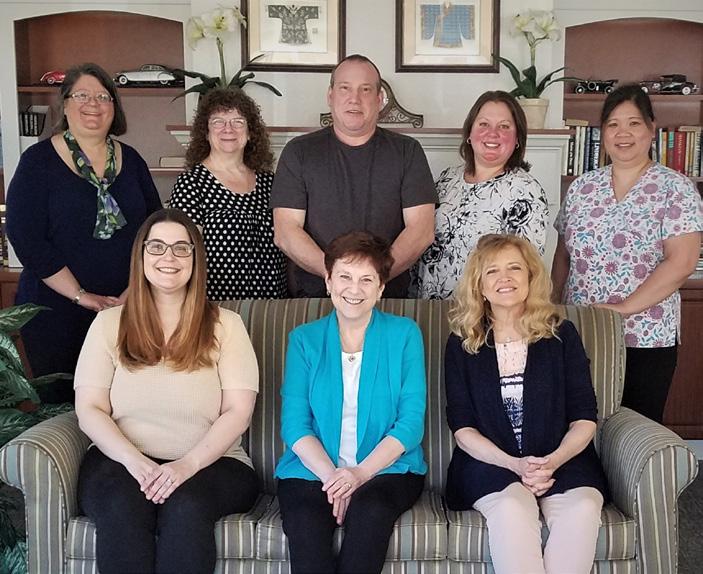
It may seem sensible to skip breakfast and lunch if your plans include a big family meal in the evening. Mary Jo Parker, registered dietitian and nutritionist in private practice in Williamsville, warns against it.
“Don’t go starving,” she said. “Find the happy medium where you’ve eaten lighter fare prior to going. Focus on protein, fiber and healthful fat to keep the blood sugar more stable all day and you’ll avoid big dips.”
Parker also advises bringing your own dish if possible.
“If you’re making it yourself, you can make it lighter,” she said.
A raw veggie tray, fruit salad, tossed salad or roasted sweet pota
toes are good options.
When facing down the buffet, look for veggies without sauces and dressings, such as raw, steamed or roasted. Fill half the plate with these and some fruit. Whole fruit is always a good choice. However, fruit “sal ads” with marshmallows or whipped topping pack plenty of sugar.
Look for lean protein sources: turkey breast, shrimp cocktail, and salmon. Marbled beef, ham and processed meats are less-than-ide al choices. Protein should cover one-quarter of the plate.

Starches should occupy only one-quarter of the plate. However, finding whole grain options may be difficult. Brown rice pilaf, whole grain rolls or sweet potatoes are a few examples.
At any meal, portion size makes a difference in caloric intake. Grab bing a smaller-sized plate helps to control portions. Many times, the dessert table features diminutive plates.

“Take a look at what’s avail able first rather than taking some of everything,” said Melinda Yoder,

registered dietitian in private practice in Buffalo. “Part of managing men tal health and wellbeing is enjoying food. If there are sugary cookies or dip that has extra sugar or saturated fat, it’s OK to have a little bit. It’s not open permission to eat it all, but you should be able to enjoy it.”
She tries to select foods with pro tein and fiber to feel fuller. A small handful of nuts, meatballs, turkey slices and shrimp cocktail are a few examples.
“Fill your plate once then mix and mingle; don’t stay around the buffet,” Yoder said.
Playing games, working on a craft or swapping stories can help keep you busy instead of only nosh ing the entire time. Offer to bring some games or craft kits to a family gathering.
A holiday party or meal without dessert seems rather Grinch-like. Yoder advises taking just a small serving and if possible, choosing something containing fruit.
Many people unthinkingly drink far more calories than they are aware. Yoder said that adding a touch of punch to a serving of water can elim inate sugar spikes while making the beverage more flavorful.
Alternate drinking water with ca loric beverages to reduce the caloric intake. Staying hydrated throughout
the day can help you avoid mindless nibbling on salty snacks, since the body often turns to salt when thirsty.
Many people give food gifts and typically those are treats. Andrea Langston, certified dietitian nutri tionist and owner of Thrive Nutrition & Wellness, LLC in Amherst, advises taking home the gift to enjoy later or sharing it as strategies that can help reduce the impact of high-calorie gifts. But it is OK to have a portion of a decadent treat.
“People this time of year go to an extreme and try to not have any indulgences,” Langston said. “It’s not good for mental health. Sit down, be present and enjoy it. Take a bite and really taste it and smell it. Enjoy the texture in your mouth. If it’s that meaningful, you’ll enjoy it that much more.”
Langston encourages clients to not deny themselves during the season, but to approach eating with a sensible plan.
“It’s not about deprivation,” she said. “Enjoy some of those things but it goes back to not making decisions while starving. Know the foods you love and have small portions. If you want to go back for seconds of your very favorites, go for it. If someone cuts you a quarter piece of the pie, say, ‘Thank you so much, but I’ll start with a sliver.’”
Every December, my husband and I let down our “meat guard” and consume a cut of beef that we rarely eat: prime rib. It’s an indulgence we justify because it’s the holiday, it tastes delicious and, well, you know, it’s what everyone wants.
Apparently, we’re not alone. Prime rib, according to multiple sources, is one of the top 5 meats con sumed during the holiday season.
But is it the healthiest meat choice? Oh, probably not. But since many of us do eat it on occasion, here now is everything you ever wanted to know about prime rib (but were afraid to ask).

It can be. Prime rib is a tasty source of many critical nutrients. A 3-oz portion (about the size of a deck of cards) boasts about 20 grams of complete protein, which delivers a decent chunk of recommended daily amounts for many. Essential for building and maintaining tissues and cells, protein also bolsters your immune system, provides energy, and balances fluids.
On the vitamin B front, prime rib rocks with several B vitamins, most specifically B-12 (nearly 100% of your daily needs). Because B-12 is import ant for red blood cell formation, it’s crucial for the prevention of anemia. One serving of prime rib also contrib utes good amounts of B-6 and niacin, both needed for turning food into energy.
Prime rib sizzles with minerals, especially selenium, iron and —the
most abundant mineral of all — zinc. While zinc fortifies your immune system, selenium protects your body from oxidative stress, and iron keeps your engine running.
Possibly, and here’s why. A 3-oz serving has 300 calories, 72 milli grams of cholesterol and 24 grams of fat (10 of which are saturated fat). Because cholesterol and saturated fat can lead to heart disease, the Amer ican Heart Association recommends that we limit our daily consumption of both: cholesterol to 300 milligrams and saturated fat to 20-22 grams. As suming that “festive” portions might land closer to 6 ounces for many, we could easily knock off a day’s worth of saturated fat and nearly 50% of our cholesterol limit in one sitting. Yikes, and we haven’t even men tioned the 600 calories!
Fat, fat and more fat. The “eye” of meat in prime rib’s center is not only marbled with fat, it has a fat-marbled muscle around it. More over, a thick cap of fat surrounds most of the roast. Since the muscles of this cut aren’t heavily used, prime rib is also extremely tender and juicy.
Only you and your heart can answer that. But if you do indulge, experts suggest moderate portions and no seconds
Serves 10 — Adapted from tastesbetterfromscratch.com
5 pounds beef prime rib: bone-in or boneless
3½ teaspoons Kosher salt, divided 2 teaspoons coarse black pepper 2 teaspoons fresh rosemary 1 teaspoon fresh thyme 8 cloves garlic , minced ¼ cup olive oil horseradish (optional)
Remove your prime rib from the refrigerator one hour before cooking. Season it on all sides with 2 teaspoons salt and cover it loosely with plastic wrap as it comes to room temperature.
Place oven rack in the center and preheat oven to 500 degrees F.
Mix together 1½ teaspoons salt, pepper, rosemary, thyme, garlic, and
Prime rib is graded accord ing to fat marbling, age and price. Prime is the best, followed by Choice and Select. Some butchers offer dry-aged prime rib, which adds another $2 to $3 a pound. Giv en that this meal will be a splurge no matter how you slice it, Amer ica’s Test Kitchen says springing for the “Prime” cut makes sense, although a “Choice” roast will be almost as good. Many butchers detach the bone and tie it back on, which simplifies carving and slicing and may add extra flavor. Boneless versions are also available.
olive oil. Pat the roast with paper towels. Spoon seasoning over it, rub bing it onto all sides.
Place the roast bone-side down in a roasting pan. If using boneless, place the roast on a rack inside the pan. Insert an ovenproof thermome ter into the thickest part of the roast.
Brown the roast at 500 degrees for 15 minutes, then reduce the oven temperature to 325 degrees and roast for another 20-30 minutes until the thermometer reaches 125 degrees for rare/medium rare (roast will con tinue to cook slightly after removing from the oven). If you like your meat more cooked, leave it in the oven longer.
Remove roast from the oven and tent it with foil. Allow it to rest for 20 minutes before carving. Carve your roast by slicing against the grain at about ½ inch thickness. Serve with horseradish, if desired.

Anne Palumbo is a lifestyle colum nist, food guru, and seasoned cook, who has perfected the art of preparing nutritious, calorie-conscious dishes. She is hungry for your questions and comments about SmartBites, so be in touch with Anne at avpalumbo@aol.com.
Ahead of a winter that will see colder than usual weather across most of the country, according to the latest forecast from the Old Farmer’s Almanac, the personal-finance website WalletHub recently released its 2022’s Best Winter Holiday Destinations report, as well as accompanying videos and expert commentary.
Focusing on cost and convenience rather than scenic beauty, WalletHub compared nearly 70 of the largest U.S. metro areas grouped by warm and cold weather. Each destination was analyzed based on 37 key metrics, primarily the expense and hassle of traveling to each location but also on other indicators, such as weather forecasts, safety and variety of activities.
Here’s a quick glimpse at some of the report’s most interesting findings:
• Among cold destinations, Omaha, Nebraska, has the lowest price for a threestar hotel room, $55, which is 2.4 times lower than Worcester, Massachusetts, the city with the highest at $133.
• Among warm destinations, Houston has the lowest price for a three-star hotel room, $40, which is 5.2 times lower than Honolulu, the city with the highest at $208.
• Among warm destinations, Orlando has the most restaurants (per square root of population), 7.281483, which is 29.0 times more than in Deltona, Florida, the city with the fewest at 0.250773.
To view the full report and your metro area’s rank, visit: wallethub.com/edu/best-winter-holiday-destinations/7930
• The average flight to a popular cold winter destination costs $396.17, lasts 3 hours and 30 minutes and has 0.28 connections. In comparison, the average flight to a popular warm winter destination costs $521.74, lasts 5 hours and 17 minutes and has 0.57 connections.
“You can do it right in your bedroom if you have company,” he
For those with a little more time, following a fitness video on YouTube can help them stay moving without


“It’s a busy time when our schedule dictates everything,” said Brian DeLuca, director of Physical Therapy & Impact Sports Perfor mance at UBMD Orthopaedics & Sports Medicine. He sees patients at the Physical Therapy & Performance Training Center at UBMD Orthopae dics & Sports Medicine and Impact Sports Performance Harbor Center. “Schedule exercise. Having a work out partner helps. If you assume it will happen, it won’t. Having some one to meet helps you stay account able.”

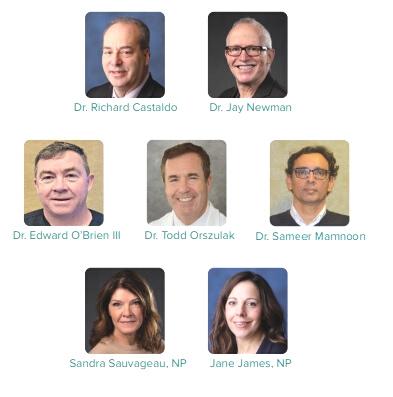
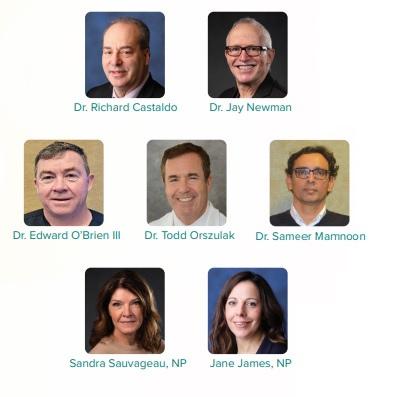




In addition, invite a family mem ber to join you on a walk and you can use this time to catch up and look at the community’s decorations. Or call a friend while you walk.
DeLuca encourages patients to make activity a family tradition, such as skating, skiing, or walking in the park during their visit. Every holiday, you can count on these tradi tions to keep you moving.
If your holiday plans include traveling, workouts can be more challenging to fit in. But it’s still possible.





“Scope out the hotel and the area,” DeLuca said. “Otherwise, you’ll be inactive.”
Many hotels offer fitness centers and the concierge can tell you of places to stay active.
“I like the HIIT training,” said Paschetto, certified personal trainer and independent contractor at Pelit era’s Fitness and Performance Center in North Tonawanda. “You can knock it out in 15 minutes and you don’t need a lot of movements.”
As a variation of HIIT, tabata workouts can offer a good calorie burn. A tabata timer can help keep the sessions moving, as these tim ers go off in brief cycles to monitor an intense workout session. After warming up and stretching, perform a four-minute session, alternate among three bodyweight exercises like jumping jacks, burpees, jump squats, and mountain climbers every 30 sec onds with a 20-second rest between them. Do each movement to 100% capacity, as hard and fast as possible.
Paschetto encourages clients to comprise a workout such as this with a movement for their legs, such as squats; something for pushing, such as push-ups; a pulling movement, such as seated rows with exercise bands; core strengthening, such as planks; and heart rate movements, such as mountain climbers or run ning in place.
Challenge a young niece or nephew or your own child to a game of performing 10 jumping jacks or push-ups every time they hear the word “snow” in the movie. Everyone in the room gets a different “action” word.

“My nephews love doing this,” Paschetto said.
Ironically, we tend to not only move less but eat more during the season — and many of those food choices are usually poor. That’s why Paschetto reminds clients to mind their diet if they are moving less.
This holiday season, it can be tempting to run out last minute and buy the first thing that comes to mind for our loved ones.

But pause for a minute. Remember instead that inspiring someone you care about to care about themselves might be the best gift you can give them this year.
Self-care and natural health for the mind, body and spirit
By Amanda Jowseycreate a sense of wholeness and ground us, especially during busy times like these. Try to gift experiences, not things, that facilitate this peace and relaxation. Let’s show our love for others by helping them to love themselves. Here are some of the healthiest and most unique local experi ences to gift this year with featured products to purchase from each location.
1.
AT SPIRITUALLY ROOTED: Book an energy healing session at Spiritually Rooted in North Tonawanda with certified healer Patricia Hall. Reiki is a Japanese energy healing technique which acts as a massage for the energy field and relieves physical, emotional and mental strain.

30-minute session: $40. Call or book online.
FEATURED PRODUCT Earth’s Element water bottle: These non-toxic bottles can be filled with someone’s favorite gemstones and help them feel a bit more connected to the ongoing challenge of drinking enough water. Benefits of crystals range from boosting the immune system to enhancing feelings of inner clarity and confidence. The cap features a non-toxic airtight bamboo cup. $50 with first set of crystals included.
Spiritually Rooted 90 Webster St., North Tonawanda 716-262-2897 • Spirituallyrooted.com
2.
: Get that hardworking man or woman in your life a stretching session with a trained flexologist at the StretchLab in Blasdell. Stretching, especially aided stretching, improves flexibility and mobility, decreases pain and boosts energy.

Sessions are 25 or 50 minutes. First time 50-minute mobility assessment stretch: $29 for 25 minutes or $49 for 50 minutes.
Regular cost is $49 for 25 minutes and $95 for 50 minutes. Discounts are available based on frequency of treatments.
FEATURED PRODUCT Hyperice Massage gun: This portable percussive massager loosens muscles and provides instant relief for massages on the go or at home. Normally $199. Now on sale for $179.

The StretchLab 3860 McKinley Parkway, suite 230 Blasdell • 716-303-0518 • stretchlab.com
4. SALT CAVE EXPERIENCE Book
a Salt Cave session for someone at AURA Salt Cave and Wellness. Salt therapy or Halotherapy reduces stress, detoxifies the body, boosts immunity, increases energy and helps respiratory and skin issues.

45 minutes session: $35 • Additional spa services can be added to enhance the experience. AURA also sells essential oils, gemstones, teas and tea ware, salts, herbs and other metaphysical tools.
FEATURED PRODUCT: Plant Therapy Essential Oils: AURA carries a huge line of Plant Therapy essential oils, the only brand guaranteed to be 100% pure, natural and of the highest quality for use. The healing and aromatic benefits of essential oils range from better skin and sleep to boosting the immunity and easing tension and anxiety. AURA also sells KidSafe Plant Therapy oils for the littles in your life. Prices range from $14.95-$24.95 based on size and contents (10ml and 30ml bottles)
AURA Salt Cave and Wellness 6429 Transit Road, East Amherst 716-276-9120 • aurasaltcave.com
3. GIVE THE GIFT OF CREATIVE EXPRESSION: Gift a class at WNY Book Arts Center in downtown Buffalo. They offer print and letterpress making, screen printing, book and paper making and origami classes taught by local professional artists. Creativity boosts mood, self-esteem, improves cognitive function, relieves anxiety and depression and improves relationships. WNY Book Arts has classes, group experiences, open studios, and oneon-one instruction.
Prices range from $25 - $50 for basic letterpress printing. Book classes range from $55- $100. Prices depend on the type of class, level of skill and materials required.
FEATURED PRODUCT “Grow through what you go through” mug: The perfect reminder gift for someone who has been going through a hard time or is on a personal wellness journey of any kind. $13.

Western New York Book Arts Center 468 Washington St., Buffalo 14203 716-348-1430
For questions, please email rosemary@wnybookarts.org Wnybookarts.org
5.
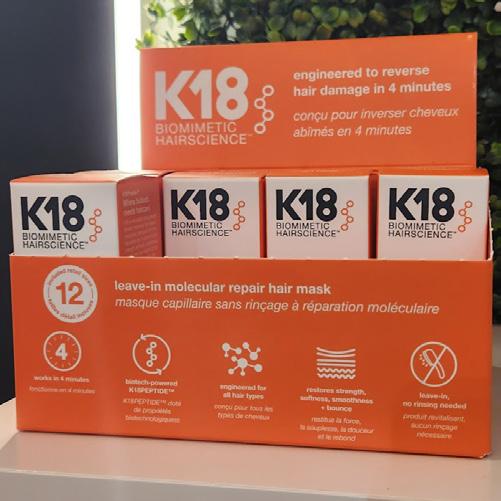
BY NATALIE: Know someone that needs a little pampering? Book them, man or woman, a luxury hair treatment for scalp and hair health at Hair Reformation by Natalie. Book an Olaplex, K18, Malibu Crystal Gel, Japanese Scalp Mist or other Hair Facial treatment to rebuild the strength, structure, elasticity, softness, shine, smoothness and bounce of hair like never before. You don’t need to purchase additional salon services to enjoy them. Each treatment comes with a fresh blow out to leave looking and feeling like a hair model. H.R. is the only salon on the East Coast to offer these, so you’ll also be winning the unique gift award!
Prices depend on service and range from $75- $100.
FEATURED PRODUCT K18 leave-in molecular repair hair mask: This mask is designed for all hair types and is engineered to reverse hair damage in four minutes. It restores strength, softness, smoothness, shine and bounce. $50. Hair Reformation by Natalie 9912 Transit Road, E. Amherst 716-276-8690 • Text only: 716-374-0616 • Hairreformation.com
The holiday season can generate warmth, togetherness and joy among family members. But for some, it can manifest drama, emo tional pain and frustration.
If some of your family members cause the latter, you can plan to pre serve your mental health when you get together.
“An ounce of prevention is worth a pound of cure,” said Sourav Sengupta, child and adolescent psychiatrist at UBMD Psychiatry and associate professor of psychiatry and pediatrics at Jacobs School of Medicine and Biomedical Sciences, University at Buffalo. “So many of us haven’t been able to stay in touch and there could have been some lack of connection. It’s OK to say explicit ly say, ‘Let’s talk about things we can feel good about as a family.’ It’s OK to steer the conversation.”
Some family members may feel relieved that you don’t want to hash out politics or religion and join you in friendly small talk.
Don’t anticipate that your uncle
who asks embarrassing questions will behave himself this year. Sen gupta said that instead, it’s wise to prepare for the questions. For example, if your uncle asks why you dropped out of college, explain your plans for the year. But don’t expect him to simply accept you know what you’re doing and praise your ideas.
“There likely will be difficult reactions,” Sengupta said. “You don’t want to be off-guard. There may be extended family who after a little eggnog will likely not have cordial conversation.”
He recommends beginning with caring statements, such as “You know I love you and you’re import ant to me. I like connecting, but I’m feeling stressed about…”
Realize it’s not about you.
If Uncle Nosey asks why you’re not as successful in business as your cousin, perhaps he is trying to com pensate for your cousin’s romantic shortcomings. Maybe your uncle asks within your cousin’s earshot to build her up — even though it tears you down. Or he could boast to boost his own image.
“The challenge is not get caught up in it,” Sengupta said. “Once you’re three one-ups in, it’s hard to get away. The real answer is to disengage.”
Sometimes, Aunt Busybody asks about your love life so she has something to think about and talk about because her life is boring. Share only what you want the rest of your family to know. Her motivation could be as innocent as hoping you find someone as wonderful as her husband, without the realization that you feel content single.
When pressed about a sensitive topic, pause. Excuse yourself to go to the restroom. This allows time for you to compose a reply, whether you answer the question or not. Knee-jerk responses and fighting fire with fire result in regret. Asking, “Why do you want to know?” both buys time and puts the questioner on the spot.
Sometimes questioners clearly want to stir the pot, such as, “You don’t really think your daughter has chosen the right career, do you?”
Staying upbeat is the right strate gy: “I support my daughter’s deci sions. It’s her life.” And then change the subject.
Emulate the 30-something wom an questioned about why she’s not married. She offered, “Just lucky, I
guess” as her cheeky reply. Humor can diffuse a situation if not at the expense of others.
Cruel remarks or mocking ramps up the drama.
“This is where it gets challeng ing,” Sengupta said. “If you know you’re moving towards a conver sation where you know conflict happens, talk about factual things that have happened. Don’t veer into theories about public health or the elections.”
Acknowledge anything with which you can agree and then change the subject, so the other person feels he has “won” the conversation. In reality, getting off hot button issues is the real “win.”
Sengupta said that it’s perfectly OK to say, “I’m not prepared to talk about that right now” and change the subject.
“Sometimes we have to agree to disagree,” he said. “It’s helpful to put it out there that you both want to have a nice time with extended family.”
It can be easy to show up at a family gathering anticipating a bad time and then experience one.
Sengupta said that engaging in an activity instead of only talking can help the time together pass pleasant ly than struggling to make non-offen sive small talk.
Zero in on a positive, uplifting family member. But extend grace to the downers, especially considering the social awkwardness generated by the pandemic’s isolation.
Avoid going to a family gather ing with the expectation of others meeting your emotional needs, especially if they have not done so in the past.
“The most important thing is to take care of ourselves before we have these kinds of potentially tense situa tions,” said Erin Thompson, licensed clinical social worker and owner of Believe and Breathe Counseling in Penfield.
This could include taking time for mindfulness, deep breathing, and other methods of de-stressing. Get ting into the right frame of mind can make it easier to handle triggering situations or comments.

Mentally rehearse “safe” topics, like the weather or sports which oth er family members cannot turn into verbal abuse. These distractions can keep the conversation from veering into dangerous waters.
Plan to give your family a signal it’s time to go if things get too dicey. If your mental health will suffer regardless of the strategies you em ploy, it’s OK to stop in briefly to the gathering and then leave — or not even go at all. See non-toxic family members another time so you can avoid others’ verbal haranguing.

 By Deborah Jeanne Sergeant
By Deborah Jeanne Sergeant
Do you know your family’s health history? This season may be a good time to find out.

“In cardiovascular disease, family history is extremely important for assessing risk for coronary artery disease, risk of sudden cardiac death, aortic aneurysms and valvular heart disease,” said physician Vijay Iyer, CycleNation co-chairman, cardiologist and director of the Gates Vascular Institute.
The holiday season may seem an odd time to talk about family health history. However, in some ways, it’s the ideal time. You may see relatives face to face whom you seldom see. It’s also a time for remi niscing and sharing. How you bring up these topics makes a difference between learning more about your medical background and spurring a completely awkward and unwanted conversation.

If family members withhold health information, it may be for rea sons important to them. That could include embarrassment over per ceived stigma, such as for a mental health issue. Or perhaps discussing the death of beloved family members dredges up painful memories of a dark period.
Begin conversations about health matters with the person at the heart of the issue to avoid hearsay. For most families, it’s better to initiate the conversations one on one, not at the dinner table. Ask if it’s OK with the person to bring it up.
Instead of asking in the vein of
morbid curiosity, frame your ques tions as to how they relate to you or your family, such as a trait or symp tom you notice in you or your child that a relative shared. Explain why you want to know, such as to seek early intervention.
“I find asking an open-ended question like, ‘Are you aware of any family members who have a history of cardiac disease?’ is a good place to start before asking specific questions like, ‘Did anyone in your family have a heart attack before the age of 65?’ or “Do you know anyone in your immediate family who died sudden ly?’” Iyer said.
You can always assure the person sharing that the information will be used only with a healthcare provider as needed.
“Couch it in the context of why you want to know,” said Sourav Sengupta, child and adolescent psychiatrist with UBMD Psychiatry and associate professor of psychiatry and pediatrics at UB. “You’re ask ing about something personal. Say, ‘We’re trying to get some support for Johnny for emotional issues he’s hav
ing. Is there anything like this that’s happened in the family?’ You don’t necessarily want to ask if someone’s had a particular illness, but anyone in the family who was really worried a lot or had to go to the hospital for emotional health help.”
He added that sticking with symptom-related language rather than diagnosis-related language can feel less stigmatizing to anyone asked about health history.
Engage the person in a conversa tion, not an interrogation. It may also help to start with your concerns for yourself or your child.
Don’t let concern over the other person’s possible sensitivity deter you from learning your family’s health history. This knowledge can help caregivers and patients plan and undertake lifestyle changes to help reduce risk.
“Use ‘I’ statements,” Sengupta said. “‘I’ve been thinking about that tough time I had when I was in high school feeling stressed and worried and a little sad’ and then bringing it to the current. ‘I’ve been trying to work some of these things lately.’ It gives context. It helps them feel like talking with you, that they’re helping. You’re not just asking to be nosey. It’s for healthcare needs.”
You could also consider asking family members to fill out a question naire about family health issues that are important to you. Compared with a conversation, filling out a question naire can take the pressure off and allow family members time to frame their responses thoughtfully.
L TO R: Erin Thompson, licensed clinical social worker at Believe and Breathe Counseling, PC, in Penfield; Dawn LeBeau, licensed clinical social worker and owner of Dawn LeBeau Counseling Services in Rochester
The flu has been overshadowed during the past few years be cause of COVID-19.
However, flu-related illnesses have risen dramatically this season causing hospital system strain and an abundance of sick children and adults before expected.
“The flu is something we deal with every year in the fall, but it started earlier than in recent years. We have seen so far, flu issues are increasing and becoming a problem for our medical profession,” said physician Jennifer Abeles, internal medicine-pediatrics at the University at Buffalo medical department inter nal medicine.
“We have seen a combination of flu, COVID-19 and other respiratory issues all coming to a head. The flu is something to take seriously because while most people will recover, there is a significant amount of people where it can turn into pneumonia or death.”
Abeles, who is also the director of the adult sickel cell transitional care program for UBMD, discuss es five aspects of the flu and viral ailments.
Flu symptoms usually come on suddenly. People who have flu of ten feel feverish, present chills, cough sore throat, muscle or body aches, headaches and fatigue. However, there are numerous common miscon ceptions when dealing with the flu.
“Many people automatically think that when they are not feeling well it is the flu,” said Abeles. “There is a distinctive difference in overall fatigue and other key symptoms with the flu such as high fever vs. the common cold where symptoms like coughing and runny nose persist.”
One of the major issues that Abeles wants to dispel surrounds the flu is the flu shot. “I hear too often people saying they get the flu from the flu shot simply because they feel some sickness or symptoms like fatigue and congestion. To me, that is a great sign if your body responds like that because that means your immune system understands and is reacting to something coming into your body. But that isn’t going to give you the flu,” she added.
Another myth Abeles wants to point out is patient misdiagnosis.
“The issue now with COVID-19 being something we have dealt with for the past few years is that when ever anyone feels sick they auto matically think that it is COVID-19. They take numerous COVID-19 tests unnecessarily. There are often clear signs of when you have a common cold and when you have a distinctive respiratory issue.”
Respiratory syncytial virus or RSV is a common respiratory virus that usually causes mild, cold-like symptoms. Most people recover in a week or two but RSV can be seri ous, especially for infants and older
adults. It has been a hot medical top ic because of the number of children that have been hospitalized this early fall. RSV is the most common cause of bronchiolitis in younger adults, which is inflammation of the small airways in the lung and pneumonia, which is infections in the lung.
Each year in the United States, RSV leads to about 2.1 million outpa tient visits among children younger than 5 and between 58,000-80,000 hospitalizations among children younger than 5, according to the Centers for Disease Control and Prevention.
“We have had an incredible num ber of RSV cases hitting our younger population. It is making headline news,” said Abeles.
Abeles believes vaccinations are the reasons why many viruses and diseases that used to ravage society are no longer an issue. She views without the vaccination pro cess; COVID-19 would have caused numerous more deaths and lingered longer as a grand pandemic.
“With many viruses and vacci nation processes, we are attempting to get herd immunity. “Without getting vaccinated, you could have longer term sickness or longer term consequences,” she said. “I would never tell a patient to do anything that I wouldn’t do for myself. I took the flu vaccine and my family took the flu vaccine. I want to keep them from getting sick. You don’t want to see what life would be without vaccines.”
Most people with the flu get better on their own. However, influenza can be serious and with complications, can be deadly. People who are at higher risk of developing flu complications include young children younger than 2, adults older than 65, residents of nursing homes
and other long-term care facilities or those with weakened immune sys tems, according to the Mayo Clinic.
“We have to take care of each other as a society and that is why performing some of the basic hy giene routines and getting vaccinated continue to be essential,” she added.
Sometimes the simple things make the biggest differences.
“We know how viruses work. So we tell people to go back to the basics of regular handwashing, keeping your distance from sick people and also understanding that you should stay home from work and your chil dren should stay home from school if they are sick to prevent spreading,” said Abeles. “That is how you pre vent the spread along with making sure if you touch objects like door handles you don’t immediately touch your face.”
By Deborah Jeanne SergeantDuring the thick of the COVID-19 pandemic, it was anyone’s guess as to how quarantine and isolation would affect HIV rates, which had been inching lower.
The New York State HIV/AIDS Annual Surveillance Report, released in March 2021 by the Division of HIV Epidemiology, Evaluation and Partner Services, stated that in 2020, 85 people living in Erie County were newly diagnosed with HIV and six in Niagara.
“Generally speaking, new inci dences of HIV have been trending downward in New York state for the last several years and significant progress has been made to bend the curve toward ending the epidem ic in the state through a variety of
tactics that include increasing the number of people who are aware of their HIV status and take action with that knowledge toward treatment or prevention,” said Matthew Crehan Higgins, associate vice president spe cialty care at Evergreen Health.
Although an overall decrease in diagnoses for the past few years is positive news, Higgins noted an uptick in the past three years, “an un expected increase in new diagnoses in the Buffalo and Rochester region,” he said.
Higgins in part blames the increase in HIV diagnoses on the hesitancy of patients in seeking med ical care for symptoms because they feared catching COVID-19. Seeking a diagnosis early can mean early treatment, which in the case of HIV can mean preventing progression of the infection.
“Ultimately, while seeing in creases in diagnoses is never com fortable, an impact of increased access to and provision of testing is that those infections are identified earlier than they may have been in the past and the person has opportu nity to access treatment quickly,” he said. “The most important thing for people to know, especially if they are not currently aware of their HIV sta tus, is that knowledge is power. HIV treatment can be accessed quickly and is very effective.”
Once a patient receives diagno sis, antiretroviral therapy can help maintain good health and reduce risk of transmitting HIV. No cure for HIV exists. For people who are HIV neg ative but at risk, HIV pre-exposure prophylaxis medication can prevent acquiring HIV.
“There are more options than ever with HIV pre-exposure pro phylaxis available in pill based and long-acting injectable forms,” Higgins said. “At the end of 2019, the New York State Department of Health began discussion of refram ing the conversation away from the outdate disease-based model and to ward a sexual health model, which is the path we have been on for a long time. Pressing forth with messages of fear have never worked but making people aware of the options that exist
for people of any HIV status and sup porting their harm reduction-based choices appears to be having a good impact overall.”
In Niagara County, LPN Jill Mor rissey in the County Department of Health said that her county’s efforts include twice-weekly sexual health clinics, which offer rapid HIV testing.
“We have the results ready by the time they’re leaving, within 20 minutes,” she said. “We haven’t done much since COVID-19 as far as out reach and testing. We’re just getting our clinic up and running in the past six months.”
Stacy Knott, nursing operations manager with Niagara County Department of Health, wants more medical providers to offer and per form HIV testing for every patient aged 13 and older.
“Initiation of antiretroviral thera py (ART) in people newly diagnosed with HIV remains a high priority,” she said. “Conduct a complete sexual health history, risk and drug use as sessment for every patient. Ask about specific behaviors that may increase one’s risk of HIV, HCV, or other STIs, such as the number of sex partners, type of sex (i.e., vaginal, anal, oral), sex of sex partners, and drugs used and route of drug ingestion, to help guide laboratory testing.
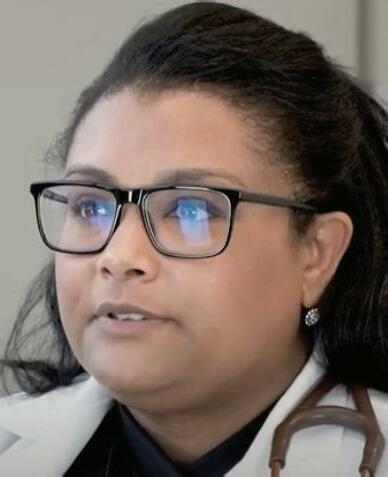
Health experts say there has been ‘an unexpected increase in new diagnoses in the Buffalo and Rochester region’By Jim Miller
What are the most common scams today that target elderly seniors? My 75-year-old mother has been swindled several times over the past year, so I’m being extra cautious.
— Paranoid PattyGreat question! While many scams today are universal, there are certain types of fraud that specifically target older adults or affects them disproportionately. Unfortunately, these senior targeted scams are on the rise.
According to the Federal Bureau of Investigation (FBI), in 2021 there were 92,371 older victims of fraud resulting in $1.7 billion in losses. This was a 74% increase in losses com pared to 2020.
Here are five of the most common senior scams that were reported last year, that both you and your mom should be aware of.
1. Government imposter scams: These are fraudulent telephone calls from people claiming to be from the Internal Revenue Service, Social Security Administration or Medi care. These scammers may falsely tell you that you have unpaid taxes and threaten arrest or deportation if you don’t pay up immediately. Or they may say your Social Security or Medicare benefits are in danger of being cut off if you don’t provide personal identifying information. They may even “spoof” your caller ID to make it look like the govern ment is actually calling.
2. Sweepstakes and lottery scams: These scams may contact you by phone, mail or email. They tell you that you’ve won or have the potential to win a jackpot. But you need to pay a fee or cover taxes and processing fees to receive your prize, perhaps by prepaid debit card, wire transfer, money order or cash. Scammers may even impersonate well-known sweepstakes organizations, like Pub lishers Clearing House, to fool you.

3. Robocalls and phone scam: Robocalls take advantage of sophisti cated, automated phone technology to carry out a variety of scams on trusting older adults who answer the phone. Some robocalls may claim that a warranty is expiring on their car or electronic device, and payment is needed to renew it. These scam mers may also “spoof” the number to make the call look authentic.
One common robocall is the “Can you hear me?” call. When the older person says “yes,” the scammer
records their voice and hangs up. The criminal then has a voice signature to authorize unwanted charges on items like stolen credit cards.
4. Computer tech support scams: Theses scams prey on senior’s lack of knowledge about computers and cybersecurity. A pop-up message or blank screen usually appears on a computer or phone, telling you that your device is compromised and needs fixing. When you call the sup port number for help, the scammer may either request remote access to your computer or that you pay a fee to have it repaired.
5. Grandparent scam: The grand parent scam has been around for several years now. A scammer will call and say something along the lines of: “Hi Grandma, do you know who this is?” When the unsuspecting grandparent guesses the name of the grandchild the scammer most sounds like, the scammer has established a fake identity.
The fake grandchild will then ask for money to solve some unexpect ed financial problem (legal trouble, overdue rent, car repairs, etc.), to be paid via gift cards or money trans fers, which don’t always require identification to collect.
Some other popular scams targeting older adults right now are romance scams through social media and online dating sites, COVID-19 scams, investment scams, Medicare and health insurance scams, and Internet and email fraud.
For more information on the different types senior scams to watch out for, along with tips to help your mom protect herself, visit the Na tional Council on Aging website at NCOA.org, and type in “the top 5 fi nancial scams targeting older adults” in the search bar.
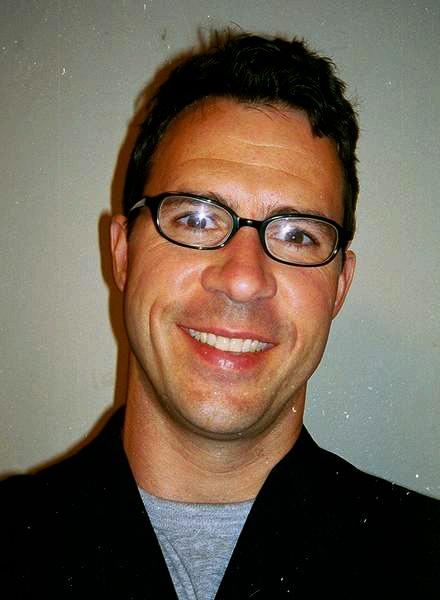
Send your senior questions to: Savvy Senior, P.O. Box 5443, Norman, OK 73070, or visit SavvySenior. org. Jim Miller is a contributor to the NBC Today show and author of “The Savvy Senior” book.
From an entitlement program standpoint, 2023 is going to be a very good year for retirees.
Not only will they receive a nice 8.7% cost-of-living increase in their Social Security retirement benefits — the largest since 1981 — the Centers for Medicare and Medicaid Services also recently announced that their Medicare Part B standard monthly premium will be lowered 3% ($5.20) from the current rate of $170.10 per month, to $164.90/month in 2023.
The reason for the reduction is a correction to last year’s hefty Part B premium increase, which was larger than it needed to be. The 2022 premium hike of about 14.5% was announced amid uncertainty about the potential impact of a new Alzhei mer’s drug called Aduhelm, which threatened to explode Medicare costs. That didn’t happen. The cost of the drug was cut roughly in half from an original $56,000 a year and Medicare sharply limited coverage. This creat ed a large financial reserve for Part B, allowing the program to reduce next year’s premium.
Retirees will also be happy to know that in addition to the premi um reduction, the annual deductible for Medicare Part B will also be lowered $7 from $233 in 2022, to $226 in 2023. And if you have a Medicare Part D prescription drug plan, the av erage premium in 2023 will be about $31.50, which is a 1.8% decrease from $32.08 in 2022.

But the news isn’t all rosy. The deductible for Medicare Part A (hospital coverage) per benefit period (which generally starts when you are admitted to the hospital) will be $1,600 in 2023, up $44 from this year’s $1,556. That applies to the first 60 days of inpatient care. For the 61st through 90th day, the coinsurance will be $400 per day, up from $389 this year. And for days 91 to 150, the charge will be $800 per day (up from $778 in 2022).
And the skilled nursing facility coinsurance for days 21-100 will also increase to $200 per day, up from $194.50 in 2022.
High earning Medicare beneficia ries, which makes up about 7% of all Medicare recipients, will also receive a break in 2023. Medicare surcharges for high earners are based on ad justed gross income from two years earlier, which means that 2023 Part B premiums are determined by 2021 annual income.
So, if your 2021 income was above $97,000 up to $123,000 ($194,000 up to $246,000 for married couples filing jointly), your 2023 Part B monthly premium will be $230.80, down from $238.10 in 2022.
• Monthly premiums for singles with an income between $123,000 and $153,000 ($246,000 and $306,000 for joint filers) will decrease from $340.20 to $329.70 in 2023.
• Individuals earning above $153,000 up to $183,000 ($306,000 to $366,000 for joint filers) will see their monthly premium decrease from $442.30 to $428.60 in 2023.
• Those with incomes above $183,000 up to $500,000 ($366,000 to $750,000 for joint filers), your 2023 Part B premium will be $527.50, down form $544.30 in 2022.
• And single filers with income of $500,000 or more ($750,000 or more for joint filers) will pay $560.50 per month next year, versus this year’s premium of $578.30.
High-income beneficiaries with a Medicare Part D prescription drug plan will also pay a little less next year. If your income was over $97,000 ($194,000 for joint filers) you’ll pay a $12.20 to $76.40 monthly surcharge on top of your regular Part D premi ums based on your income level.
Astaggering 114.5 million view ers tuned into Super Bowl 56 in February 2022, breaking all records for the most viewed broad cast in American history. Super Bowl 57 in 2023 is expected to have an even larger viewing audience.
While many are watching the game for fun, illegal wagers in prior years were estimated at more than $3.8 billion and that includes gam bling on big games such as the Super Bowl.
Rising numbers of individuals are betting on fantasy sports through online forums or office pools.
Economist Rodney Paul, from Syracuse University’s Falk College of Sport and Human Dynamics, estimated that more than 2.5 million fantasy leagues exist in the United States.
The Fantasy Sports Trade Associ ation estimates 56.8 million people in the US and Canada participate. The average profile according to FSTA data is a 37-year-old male with a col lege degree who spends $465 a year on fantasy sports, and it’s no surprise that the favorite fantasy sport is football.
Fantasy sports giants includ ing Draft Kings and FanDuel have attempted to rebrand daily fantasy sports gambling as games of skill. People enjoy playing fantasy sports without realizing the potential nega tive outcomes. When the gains con tinue to be negligible and the activity can escalate to being compulsive, this may be a sign of problem gambling.
Participating in fantasy sports may increase the enjoyment of the experience for some, especially as the level of risk increases. Research has found there is an association between participating in fantasy sports and gambling problems. Sports gamblers were found to significantly spend more than social gamblers per bet

ting session.
The National Council on Prob lem Gambling estimated that two million adults in the United States meet the criteria for a gambling addiction, with between four million and six million people being impact ed by problem gambling. Criteria for a gambling disorder includes a need to gamble with increasing amounts of money, restlessness or irritability when attempting to stop, experienc ing a loss of control, a preoccupation with gambling, has jeopardized family or work relationships, lies to conceal extent of gambling and borrows money to continue to chase one’s losses.
If you are concerned that your gambling habits or those of a loved one have become a problem, help is available.
For more information on local resources and referrals to counseling or treatment, contact the National Council on Alcoholism and Drug Dependence, Rochester Area or the Finger Lakes Problem Gambling Resource Center. To learn more and/ or request a presentation for your community group, contact NCADDRA or visit www.ncadd-ra.org
Coming soon to NCADD-RA’s Education and Training calendar will be Gambling Brief Intervention to Treatment workshops to provide a baseline of information and steps to engage, intervene and refer.
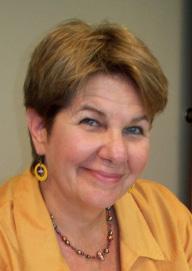
If you are eligible at age 65, your initial enrollment period (IEP):
• Begins three months before your 65th birthday.
• Includes the month of your 65th birthday.
• Ends three months after your 65th birthday.
If you are automatically enrolled in Medicare Part B or if you sign up during the first three months of your IEP, your coverage will start the month you’re first eligible. If you sign up the month you turn 65, your coverage will start the first day of the following month. This won’t change with the new rule.
Starting Jan. 1, 2023, your Medi care Part B coverage starts the first
day of the month after you sign up if you sign up during the last three months of your IEP.
Before this change, if you signed up during the last three months of your IEP, your Medicare Part B coverage started two to three months after you enrolled.
If you don’t sign up for Medicare Part B during your IEP, you have another chance each year during the general enrollment period (GEP). The GEP lasts from Jan. 1 through March 31. Starting Jan. 1, 2023, your cover age starts the first day of the month after you sign up.
You can learn more about these updates on our Medicare webpage at www.ssa.gov/medicare and our Medicare publication at www.ssa. gov/pubs/EN-05-10043.pdf.
Please pass this information along to someone who may need it.
With flu season officially under way, many people are consid ering getting a flu shot. Re cent research suggests that in addition to protecting you from the flu, the shot may also help protect your brain.
A study released this summer found that getting an annual flu vaccination was associated with a 40% decrease in the risk of developing Alzheimer’s disease over the next four years.
The same researchers, who are from The University of Texas’ McGov ern Medical School, conducted an ear lier study presented at the Alzheimer’s Association International Conference that found that a single flu vaccination could reduce the risk of Alzheimer’s by 17% and additional vaccinations in a lifetime reduced it even more.
“Our study suggests that regular use of a very accessible and relatively cheap intervention—the flu shot—may significantly reduce risk of Alzheimer’s dementia,” said physician Albert Am ran, who was involved in the research at The University of Texas.
The newer study included more than 2 million people over age 65. Previous studies were smaller and often focused on people with chronic health conditions. By including a more general group of older adults, the new study’s results add weight to the idea that a flu shot could reduce Alzhei mer’s risk.
Prior studies have found that
infections—including the flu, pneu monia, urinary tract infections, gum disease, and COVID-19—are associ ated with the onset and worsening of memory and thinking problems.
It’s not surprising then that researchers have also found an association between vaccinations and a decreased risk of dementia. A study at Duke University’s Social Science Research Institute found that getting a vaccination against pneu monia between the ages of 65 and 75 reduced Alzheimer’s risk by up to 40%. Similar results have been found in recent studies of people who re ceived tetanus, diphtheria, pertussis (Tdap); hepatitis; or shingles vacci nations.
Doris Saintil Phildor, MPH, the New York Health Systems Director at the Alzheimer’s Association, says, “These findings are important be cause anything we can do to decrease the number of people with Alzhei mer’s has vast benefits. Preventing or delaying the progression of Alzhei mer’s lowers the burden on family caregivers, and on our state’s health systems.”
To learn more about risk factors for Alzheimer’s and ways to reduce your risk, visit the Alzheimer’s Asso ciation, ww.alz.org, and type “Caus es and Risk Factor for Alzheimer’s Disease”
Anyone seeking help as a caregiver or a person living with Alzheimer’s disease or other demen tia is encouraged to call the Alzhei mer’s Association 24/7 Helpline at 800.272.3900.
Erie County Medical Center (ECMC) Corporation recent ly announced that it is one of country’s 100 best hospitals for orthopedic surgery, according to new research released by Healthgrades, the leading marketplace connecting doctors and patients.
This achievement reflects EC MC’s outstanding clinical outcomes for orthopedic surgery and puts ECMC in the top 5% of hospitals nationwide for overall orthopedic services.
ECMC was also honored with the 2023 Orthopedic Surgery Excel lence Award, a Five-Star rating in total knee replacement for 2 years in a row (2022-2023), a Five-Star rating for hip fracture treatment for 13 years in a row (2011-2023) and a 2023 FiveStar Distinction in total hip replace ment.
“As a leader in Western New York’s orthopedic care, ECMC has now achieved the Healthgrades des ignation as being among America’s 100 Best Hospitals for Orthopedic Surgery, said Thomas J. Quatroche Jr., Ph.D., ECMC president and chief executive officer.
“This highly regarded national
survey affirms that some of the best orthopedic care for patients in the nation is right here at ECMC, in our hometown. We are extremely proud of our doctors, nurses and support staff who care for our orthopedic patients every day, providing them with national best-in-class orthopedic care.”
Physician Brad Bowman, chief medical officer and head of data science at Healthgrades, said, “We commend ECMC for their ongoing commitment to providing high-qual ity care to patients undergoing ortho pedic. Consumers can feel confident that America’s 100 Best Hospitals for orthopedic surgery have demonstrat ed their ability to deliver consistently exceptional outcomes.”
Healthgrades evaluated patient mortality and complication rates for 31 of the most common conditions and procedures at nearly 4,500 hos pitals across the country to identify the top-performing hospitals for specialty care. This year’s analysis revealed significant variation in patient outcomes between America’s 100 Hospitals for Orthopedic Surgery and hospitals that did not receive this distinction.
Director DeAnna Eason. “As a long standing supporter of our organi zation, it is our distinct pleasure to celebrate her with this award.”
Horizon Health announced Nov. 14 its affiliation with Endeavor Health Services as part of its strategic plan to create a coordinated network of behavioral healthcare services across Western New York.
This network — the Horizon Health Alliance — is the result of an initiative to partner with other behavioral healthcare organizations to meet the growing demand for services.
Together, Horizon Health Alli ance’s affiliated partners will provide a comprehensive spectrum of quality coordinated care for patients and their families.
Endeavor Health Services, the inaugural affiliate, will continue to operate independently, while collabo rating with the Alliance in key areas.
“We are excited to join forces. Every person deserves high quality care in their own community and through the Alliance we will do this more effectively. By sharing resourc es that we have in common, we will improve overall operations and, with that, patient care,” said Eliza beth Mauro, CEO, Endeavor Health Services.
The Iroquois Healthcare Asso ciation (IHA) has created Upstate Works an innovative and sustainable solution for its members to battle ex orbitant rates charged by healthcare temporary staffing agencies.
“The actions that we take now are going to disrupt the face of temporary healthcare staffing in New York,” said IHA President & CEO, Gary J. Fitzgerald. “We cannot continue to sit idly by while hospi tals are made to pay a projected $1.2 billion to staffing agencies during a health care staffing crisis. ‘Upstate Works’ will help hospitals save precious resources and ensure that all New Yorkers have access to care in Upstate.”
IHA found that there are roughly 20,000 open staff positions in hospi tals across Upstate and Western New York. Because of this staff vacancy crisis hospitals have had to use staffing agencies in order to continue to ensure patient safety and essential operations in service to their commu nities. The unfortunate consequence of this reliance is skyrocketing costs further jeopardizing hospitals’ al ready fragile fiscal condition.
To help solve this problem for our members, IHA launched its own unique staffing agency, Upstate Works.
Recognized for her “extraordi nary work and incredible spirit,” Roswell Park Comprehensive Cancer Center President & CEO Candace S. Johnson, Ph.D., was named an Ad vocacy in Action Award winner by Western New York’s Housing Oppor tunities Made Equal (HOME, Inc.).

Johnson, also the M&T Bank Presidential Chair in Leadership at the Buffalo-based cancer center, was one of six individuals presented with the award at HOME’s 59th annual dinner in October. The Advocacy in Action Awards highlights those who serve as healthcare providers, human service providers or exemplary land lords.
Established in 1963, HOME works to ensure that individuals in the Buffalo and Western New York area have equal opportunities to live in housing and communities of their choice. Their annual dinner and cele bration — 2022 marking their first in-person event since 2019 — identifies local heroes who show how their “actions speak louder than words.”
“Dr. Johnson personifies so much of what HOME stands for in being of service to others and helping where needed,” says HOME Executive
“Social isolation caused by the pandemic, coupled with difficult economic times, has negatively impacted our community’s mental health, and increased the misuse of drugs and alcohol. This affiliation will bring together some of the best behavioral health professionals in our area to address the growing need for more comprehensive care and eliminate barriers to patients seeking treatment,” said Anne Constantino, CEO, Horizon Health.
The Horizon Health Alliance af filiates will employ over 1,000 people and serve 30,000 patients. Horizon Health Alliance and Endeavor Health Services will immediately begin collaborating in four key areas: Data Analytics, Training, DEIB (diversi ty, equity, inclusion and belonging) Strategies, and Marketing.
WNY community health centers recently launched a coalition campaign called “Leave340B.”
The campaign effort is launched under the coalition of Western New York community health centers, which includes Evergreen Health, The Chautauqua Center, Community Health Center of Buffalo, Universal Primary Care, Jericho Road Commu nity Health Center and Neighbor hood Health Center.
The goal of the coalition effort is to bring the patient voice into the
conversation surrounding a pro posed “carve-out” to the 340B drug pricing program in New York state. 340B enables community health centers to stretch scarce resources as far as possible, reaching more eligible patients, and providing more com prehensive services. Gov. Hochul is currently continuing a Cuomo-era budget policy that would cripple safety-net providers’ ability to treat our communities most at-risk patient populations. The proposed “340B carve-out” will be devastating to safety net healthcare providers across
the state and in Western New York. Without it, care will be ripped away from those truly in need.
The campaign seeks to bring the voice of patients into the Albany conversation through a website with a video series, a social media pro gram, and a grassroots program to enable all local patients to share what 340B means to their lives, health and wellbeing.
“The 340B program is federal, it’s been around for decades, and carving it out, as proposed by Gov. Hochul, would have devastating consequenc
“Upstate Works gives hospitals the ability to directly source contin gent (aka temporary) staff through an online marketplace,” said IHA Presi dent & CEO, Gary J. Fitzgerald. “Up state Works allows hospitals to access contingent staffing for rates 10-20% lower than traditional agency bill rates and also gives hospitals access to proprietary market intelligence for travelling staff nationally, regionally, and locally”. “This intelligence gives hospitals the knowledge, and ability, to determine competitive compensa tion to attract temporary staff, while also saving money through lower bill rates,” continued Fitzgerald.
Upstate Works has already provided significant savings to our hospitals that have taken advantage of this unique and innovative oppor tunity, according to acompany news release/
es including endangering health out comes, causing devasting economic impacts and job loss, and ensuring only underserved populations will pay the price,” said Mike Lee, COO, Evergreen Health.
“Our organization depends on 340b funding – literally – to survive,” said physician Myron Glick, founder and CEO, Jericho Road Community Health Center.
“
To learn more about how 340B supports needed care for patients, please visit www.leave340b.org.
Roswell Park president honored with ‘Advocacy in Action Award’Candace Johnson
Laughter yoga: creative exercise classes blend laughter with yoga breathing techniques
By Daniel MeyerIt is believed the average 3-year-old laughs approximately 300 times a day, while the typical 40-year-old only laughs four or five times over the same time period.
Local residents who lead creative exercise classes that mix laughter with basic breathing techniques practiced by yoga participants are attempting to increase that paltry tal ly of laughing for adults in Western New York by continuing to promote what is known as Laughter Yoga.
A form of exercise designed to engage you physically, mentally and emotionally, Laughter Yoga follows an approach that believes a good laugh can help stimulate your heart, lungs and other muscles in the body in the hopes of reducing stress, soothing if not outright eliminating tension, lessening chances of expe riencing depression, improves the functioning of the immune system and increasing the overall quality of life.
Jennifer May is a certified Laugh ter Yoga teacher and leader who hosts weekly online sessions. She was served as an instructor for seven years and regularly hosts work shops and guest lectures throughout Western New York about the many benefits of Laughter Yoga.
“It has a calming effect that
is hard to describe but once you experience it you are truly able to understand the many benefits,” said May, who lives in Tonawanda. “You become more focused, your attitude is more relaxed and that sense of being more laid back and at peace with the world after you take a class is hard to ignore. I’ve had people tell me it’s often the best thing they can do for themselves that week, which I think says a lot about how unique and special it is.”
Laughter Yoga was developed 25 years ago in India by a physi cian who believed combining yogic breathing techniques with uncon ditional laughter would result in a unique and truly creative form of exercise. Participants do not need to master any traditional yoga postures but instead need to have an open mind and desire to laugh.
According to numerous different psychological studies conducted over the last quarter-century, research con firms that humor and the outward expression of laughter offers benefits to having a healthy mind, body and spirit. The release of physical and emotional tension has been proven to show that it can improve immune health, stimulate circulation, improve your mood and enhance cognitive functions.
Laughter Yoga is also known to offer tremendous benefits for care givers and senior citizens who are seeking easy ways to relieve stress and anxiety by offering simple social stimulation. There are an estimat
ed 100 different countries across the globe that have some form of “laughter clubs” or offer some type of regular laughter classes, including in-person courses and virtual classes offered to residents of Western New York.
While each instructor has a pre ferred style, a typical one-hour class starts with some general socializing and an open group conversation about laughter. The “warming up” portion of each session normally involves some gentle stretching and calming breathing exercises. Each class is usually designed to suit the specific needs of the participants, meaning it could be highly active with designed high-intensity move ments or it could be a more lower-en ergy session for anyone who is seated or may have restricted mobility. The basic steps of Laughter Yoga include some form of clapping and chanting, focused breathing and an overall childlike playfulness to each step. Just as in a typical yoga class, each session ends with some form of silent meditation and soothing breathing to signal the end of the class.
Joyce Haskell has been a par ticipant for the past five years. She re cently set a personal goal to become a Laughter Yoga leader in the hopes of someday leading her own classes to share the many benefits she has enjoyed.
“I just immediately fell in love
with it,” said Haskell, a 76-year-old resident of Tonawanda. “I view it as an opportunity to get better in touch with your inner self and help boost and improve your energy level, which it certainly does for me.”
INSIDE. OUTSIDE. STANDING UP. SITTING DOWN.
Christopher Carson has attend ed numerous online Laughter Yoga sessions and also experienced an outdoor session at Chestnut Ridge Park in Orchard Park.
“For someone like me who feels chained to their desk for much of the week because of my job to use my lunch break once a week to do some hearty laughing and really focus on my breathing and how the air enters and exits my diaphragm, there’s really not something else that I find as beneficial,” said Carson, a 48-year-old resident of Williamsville. “The outdoor class was super cool and next year I’m going to make more of an effort to find ways to be outside because of the added benefit of breathing in fresh air while I’m laughing away my crazy high levels of stress from working in the sales industry.”
“It’s not for everyone,” said Haskell. “Some people I know have tried it out and felt it wasn’t for them, which is OK. But the number of people I know and who I suggest ed should try it far outnumbers the few who didn’t find appreciation and satisfaction from a focused effort to laugh in the hopes of improving your overall general health.”
“It provides a unique way of coping with everyday life and everything that you deal with on a daily basis,” said May, who has had students in her classes as young as 5 and as old as 85. “I love it because you can do it pretty much anywhere and it doesn’t even matter if you are standing, sitting or even laying in a hospital bed,” said May. “Not having to worry about memorizing and remembering certain yoga poses and just keeping your main focus on your breathing makes it simple and easy for everyone.”
LAUGH
May hosts her weekly Laughter Yoga sessions virtually every Tues day using the visual communications website Zoom.com. There are also classes offered at some branch loca tions of the YMCA, as a component of some recreational activities offered by municipalities located throughout Western New York, the Himalayan Institute and at select yoga studios in the region.
In addition, the Western New York Railway Historical Society hosts Laughter Yoga classes at its train depot located on South Long Street in Williamsville, with May leading the free programs that are open to any one interesting in attending. More information on future courses being held in Western New York for the current calendar year and in 2023 can be found on Facebook by searching “Buffalo Laughers.”
The website laughteryoga.org is also an online resource that provides links to other virtual classes as well as detailed information for anyone wanting to learn how they can train to be a Laughter Yoga leader or instructor or host a one-time session for a school group, team-building ac tivity or a neighborhood activity that people of all ages could attend.